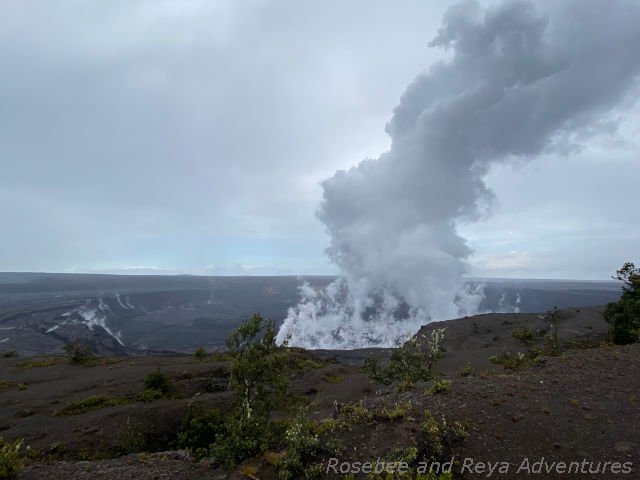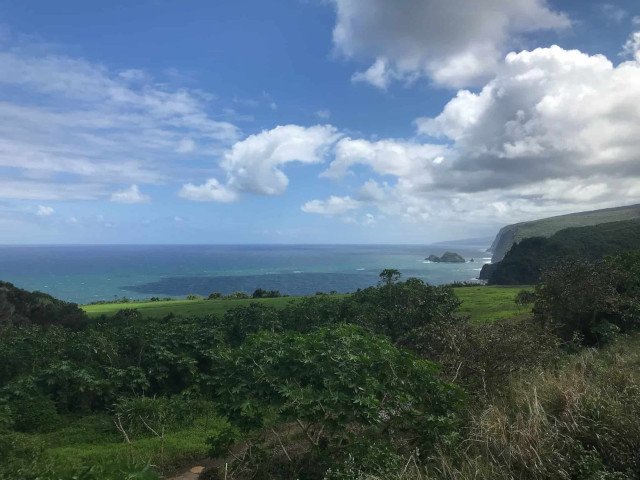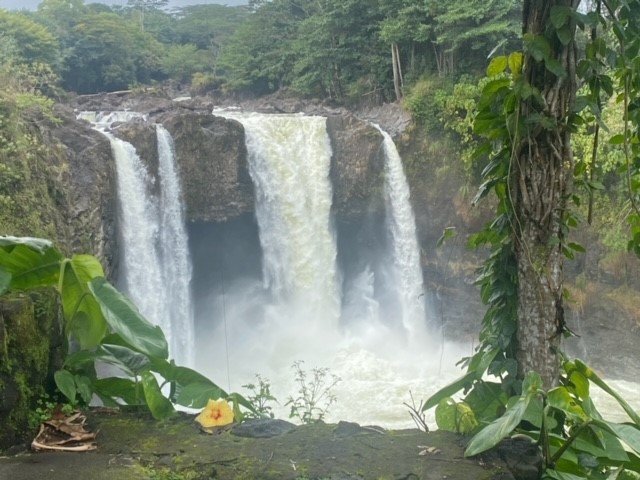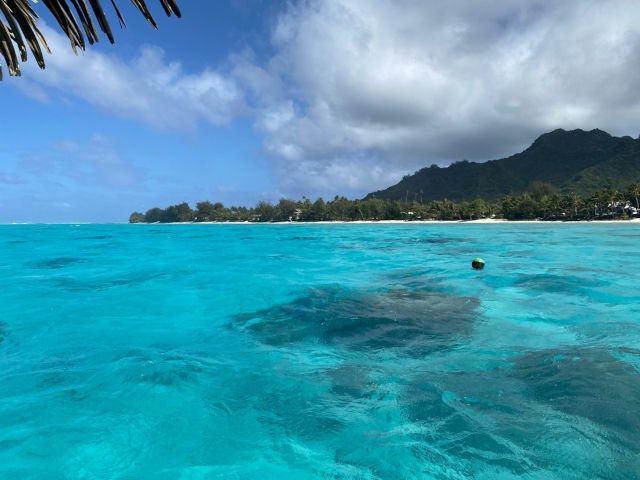Are you traveling to Oahu and wondering where you should visit? You should consider visiting the Polynesian Cultural Center during your stay in Oahu. The Polynesian Cultural Center has been an Oahu staple for over 60 years. It is one of the best family-friendly things to do in Oahu. I first visited the center when I was a teenager, and I keep going back. There are many things to do at the Polynesian Cultural Center. You can visit several Polynesian Villages, each with a variety of unique cultural experiences to enjoy, such as music, dance, and cultural shows. Besides the wonderful villages, The Polynesian Cultural Center offers other incredible activities for its visitors.
You are sure to have a wonderful time at the Polynesian Cultural Center in Oahu, Hawaii. Keep reading to learn more about the activities, the wonderful Polynesian experience, and the hidden gems of the Polynesian Cultural Center that will make your visit unforgettable.
Planning Your Visit to the Polynesian Cultural Center
The Polynesian Cultural Center is a unique cultural attraction in Oahu. It is a popular destination to visit, so it is best to plan ahead to make the most of your visit.
You can purchase tickets to visit the Polynesian Cultural Center at the center ticket office near the entrance or on the Polynesian Cultural Center website. If you purchase your tickets onsite, you risk being unable to purchase the package of your choice if your preferred package has sold out for that day. A benefit of planning ahead and purchasing your ticket online is that there is a 10% discount on most packages if you purchase your tickets at least ten days in advance.
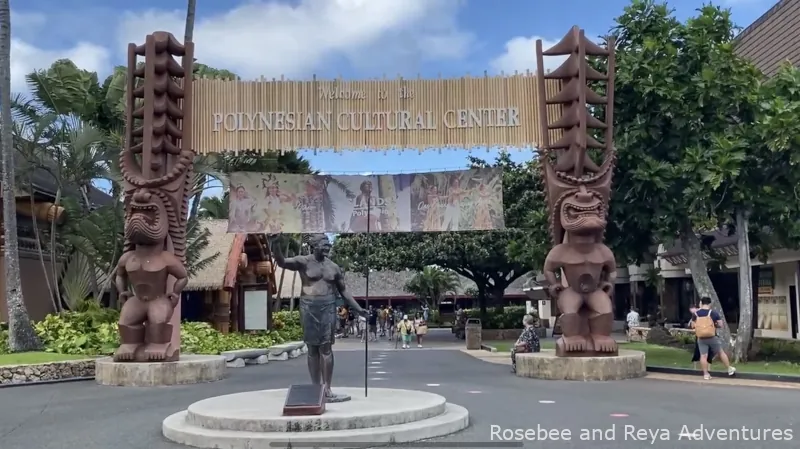
Polynesian Cultural Center Packages Available for Purchase
There are five different packages to choose from, ensuring that there is a package available for every budget. The packages include the Islands of Polynesia package, which includes visiting all of the villages. The Islands of Polynesia and HA Breath of Life Show package includes visiting the villages and tickets for the evening show. This package does not include dinner. However, there are various places to grab a bite to eat. The Gateway Buffet Package includes visiting the villages, having dinner at the buffet, and attending the evening show. The Alii Luau package includes visiting the villages, attending a luau for dinner, and attending the evening show. The Super Ambassador Package includes a guided tour of the villages, dinner at the Alii Luau, and the evening Ha Breath of Life show.
Additional Benefits Available for Package Purchases
Packages have a variety of additional benefits that change based on the package purchased. Most packages include a free three-day pass to visit the island villages after your initial visit, a free pre-selected photograph, and specific level seating areas for the evening show. The higher your package selection is, the better the benefits will be.
Polynesian Cultural Center Hours
The Polynesian Cultural Center has varying hours for its different entertainment options, which might seem confusing. They are open from 12:30 pm to 5:30 pm. These hours pertain to visiting the islands of Polynesia inside of the cultural center.
The Alii Luau is open from 4:40 pm to 6:30 pm. Dinner at the Gateway Buffet is served from 4:30 pm to 7:00 pm.
The Ha: Breath of Life evening show is from 7:30 pm to 8:45 pm.
The Hawaiian Journey Theatre is open from 1:30 pm to 6:30 pm
The Hukilau Marketplace, which is the shopping area outside of the Polynesian Cultural Center, is open from 11:00 am to 7:30 pm for most stores, kiosks, and food trucks. Pounders Restaurant is open until 8:30 pm.
The Polynesian Cultural Center, including the Hukilau Marketplace, is closed on Sundays and Wednesdays.
Things to Do at The Polynesian Cultural Center
The Polynesian Cultural Center is a great family outing. It is one of the best family-friendly things to do in Oahu. There are a variety of attractions to visit, such as the Huki, which starts about 20 minutes after the cultural center opens. The Huki is a one-of-a-kind performance on the water stage along the river, with performances from each country represented at the Polynesian Cultural Center. You can paddle a canoe along the cultural center’s river. If you’d like a more leisurely ride, you can enjoy a boat ride along the river. You can have dinner at the Alii Luau, or you can choose to dine at the Gateway Buffet, which offers many delicious dishes. During the evening, you can attend the spectacular HA: Breath of Life show.
The Polynesian Cultural Center is an incredible cultural journey that spans several islands, all in one amazing location.
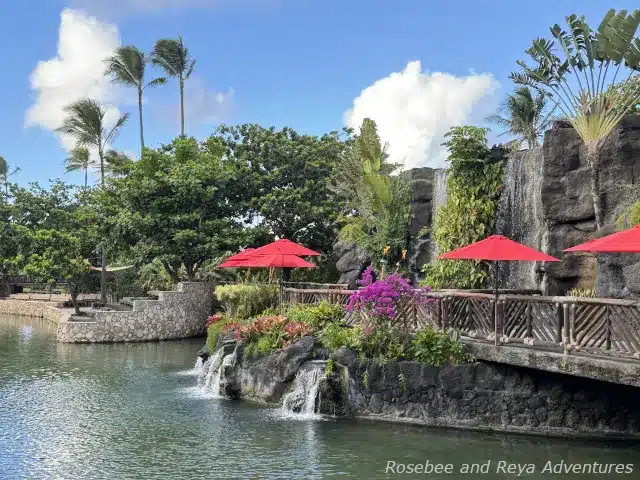
Visit the Hawaiian Journey Theatre
At the Hawaiian Journey Theatre, you can see “Hawaiian Journey.” A 15-minute movie about the Hawaiian Islands and the first Hawaiians. The movie shows the Hawaiian Islands’ natural and beautiful forests, waterfalls, mountains, and volcanoes. It also includes a Hawaiian tale that has been handed down from generation to generation about the first Hawaiians and their connection to the land.
The Hawaiian scenery in the movie is stunning. It’s worth spending 15 minutes to watch the movie. The Hawaiian Journey Theatre is open from 1:30 pm to 6:30 pm.
Huki Canoe Celebration
As I mentioned a little earlier, The Huki Canoe Celebration is the cultural center’s opening celebration that takes place in the center’s lagoon. The celebration consists of dancers from the different islands represented at the cultural center. The dances are performed on double-hulled canoes that float on the lagoon and make their way along a section of the river.
If you arrive early, you should absolutely take the time to see the Huki Celebration. It is spectacular to see.
The Huki Celebration starts at 12:40 pm. There is only one performance each day.
Subscribe to our Travel Newsletter!
Receive our free Packing Guide with Bonus Cruise Essentials Checklist and Waikiki Travel Guide with Map when you subscribe.
The Six Polynesian Villages
There are six Polynesian Villages represented at the Polynesian Cultural Center: Samoa, Tonga, Fiji, Tahiti, Hawaii, and Aotearoa (New Zealand in Maori). Each village represents a different Polynesian culture and offers different cultural presentations and hands-on activities such as learning to play the ukulele, weaving, hula lessons, and much more.
Visiting the Samoa Village at the Polynesian Cultural Center
The Samoa Village is the first village you will come to after entering the cultural center. At the Samoa Village, you can visit a Chief’s house and a Tunoa (kitchen) and see a fishing canoe. There are several cultural presentations, including learning how to spin and twirl a fire knife and how to weave a fish from coconut leaves. We saw several hand-woven fish during a visit to St. Lucia. It was lots of fun to learn how this was done. It was also surprisingly easy. Remembering all the steps to recreate one later was challenging but fun.
At the Samoa Village, we saw a demonstration on how to climb a Coconut tree. The demonstration was similar to one we saw in Rarotonga in the Cook Islands. It is always fun to watch. The villager was very funny and had incredible skills.
There are a couple of places in the village where you can purchase a bite to eat. There is also Kap’s Gallery, where you can purchase souvenirs.
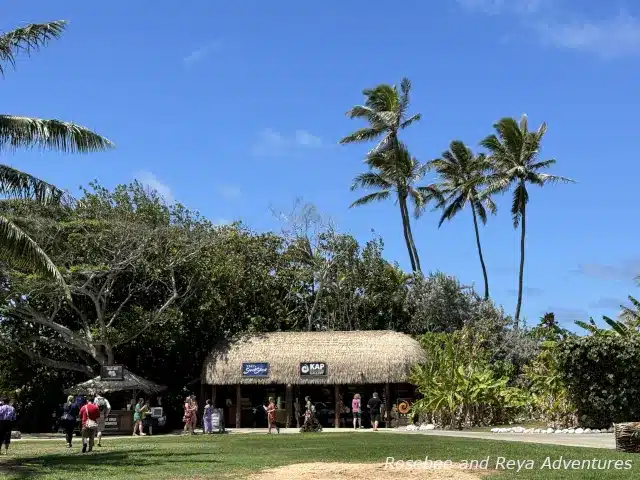
Visiting the Aotearoa (New Zealand) Village
At the Aotearoa Village, you can learn about the Maori culture of New Zealand. Aotearoa is New Zealand in the Maori language. At the Aotearoa Village, you can visit a Hawaikiroa, an ancestral meeting house, learn about Toi Whakairo, which is the art of Maori Carving, see a Kainga Noho, which is a Maori dwelling, and a Waka Tau, a Maori war canoe.
There are several hands-on activities, such as learning to twirl the Poi Waeroa, which is used in cultural dances, and Kapo Rakau and Titi Torea, which are stick games. The cultural presentations included a demonstration of Maori weaponry, which was very impressive.
If you would like to grab a bite to eat, you can visit the Kiwi Grill in the Aotearoa Village.
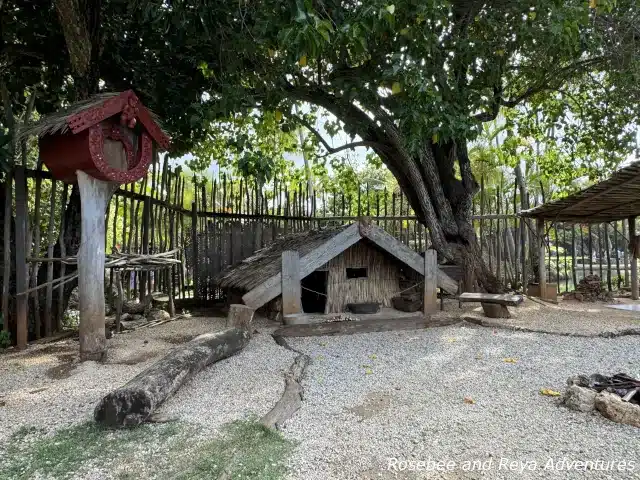
Visit the Fiji Village
At the Fiji Village, you can visit a temple, a chief’s house, and a meeting house, and you can see a wooden outrigger canoe. The cultural presentations include canoe and navigation stories, and a presentation of chants and dances.
The hands-on activities were interesting and fun. They included a demonstration of how coconut oil is made and learning how to use a derua, which is a bamboo instrument. We also learned about tapa printing, and we were able to make our own Fijian print. A fun option was the Samuqawe tattoo station, where you can get a Fijian tattoo. There are five different tattoo prints to choose from. The different options include a Chief tattoo, a Queen tattoo, a Princess tattoo, a Warrior tattoo, and a Navigator tattoo. The tattoos are not permanent and wash off easily with soap and water.
The Fiji Village was great to visit as we visited an actual village during one of our visits to Fiji. The building, floor coverings, and Tapa clothes were similar to the village we visited. It was great to see how authentic everything is.
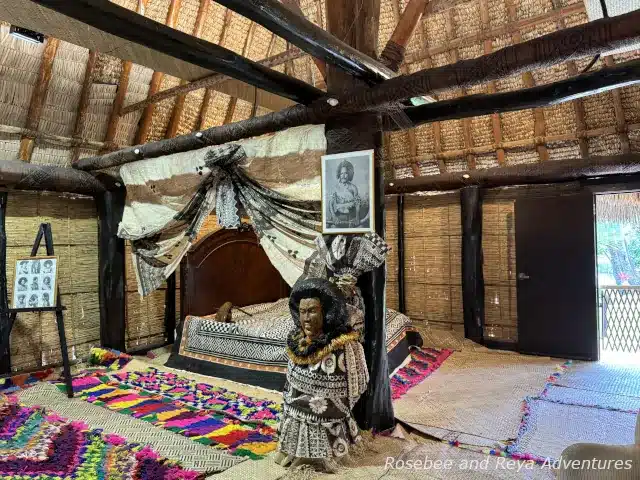

Visit the Hawaii Village
At the Hawaii Village, you can visit a chief’s house, a Hale Mua, which is a men’s eating house, as the men and women ate in different houses in ancient Hawaii. You can also visit a family dwelling house. There is also a lauhala weaving demonstration, which involves weaving using leaves from the Hala tree.
The cultural presentation at the Hawaii Village is The Sound of Hula. It is a beautiful presentation of Hula dance that includes music, song, and dance.
The hands-on activities included learning how to do hula dance and a poi demonstration. You can also learn how to play traditional Hawaiian games such as Konane. You can see perfectly preserved petroglyph Konane boards at Historical sites such as Puʻuhonua o Hōnaunau National Historical Park on the Big Island if your itinerary also includes visiting the Big Island.
Other hands-on activities include net throwing and getting a Hawaiian tattoo, which is not permanent and washes off easily with soap and water.
If you would like to grab a bite to eat, you can find the North Canoe Landing near Hawaii Village.

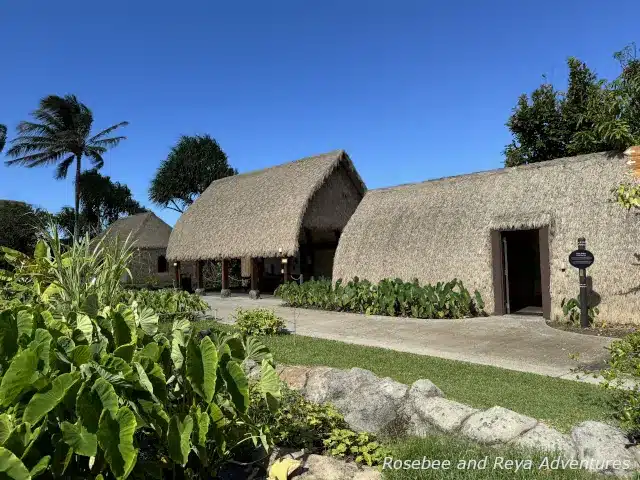
Visit the Tahiti Village
At the Tahiti Village, you can visit a Fare Tutu, which is a cooking hut, a Marae, which is a ceremonial building, and a House of Noble with an arts and crafts display.
The cultural presentations include a Tahitian Wedding ceremony, which is held twice in the afternoon. The earlier cultural presentations include an introduction to French Polynesia and the Rhythms of the Islands, which include Tahitian dances.
The hands-on activities include learning to dance the Ori Tahiti, which is the Tahitian dance seen in Luaus. You can also try throwing a spear and catching a fish with a bamboo fishing pole. There is also a cooking house where you can learn how coconut bread is made and taste the delicious bread. You can also get a Tahitian tattoo, which is not permanent and washes off easily with soap and water.
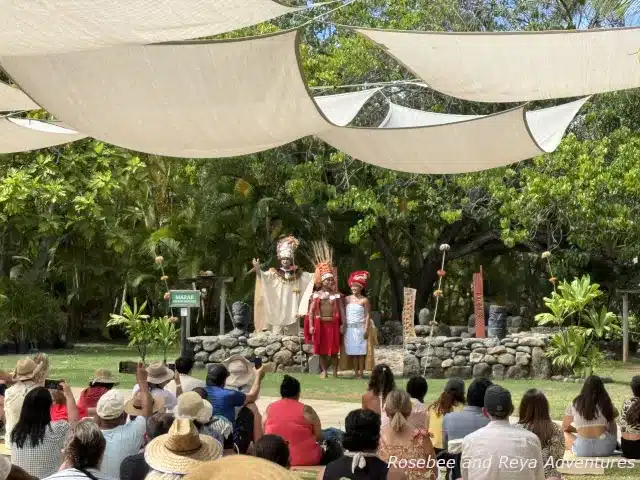
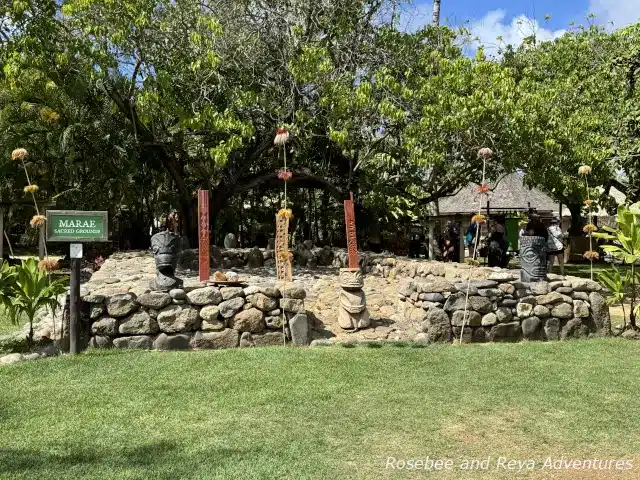
Visit the Tonga Village
At the Tonga Village, you can visit a family dwelling, a village meeting building, and a building where bark cloth is made. You will also visit Queen Salote’s Summer House, which is a scale model of the building in Tonga where Queen Salote would go for seclusion to write poetry.
The Cultural presentation at Tonga Village is called Cultural Values and Nafa. You will learn about the values, culture, and principles of the people of Tonga.
The hands-on activities included weaving a windmill from coconut leaves, which was fun to do. Weaving the windmill was similar to weaving the fish at the Samoa Village. But with a few changes and the addition of a stick, we had a handmade windmill. Other hands-on activities include playing Lafo, an ancient game played by Royals, and Hiko, which is an ancient art of juggling. The best hands-on activity, and definitely the one I enjoyed the most, was paddling a canoe on the river.
If you would like to grab a bite to eat or something to drink, the Snack Shack and the Island Drink Stand are both located at Tonga Village.
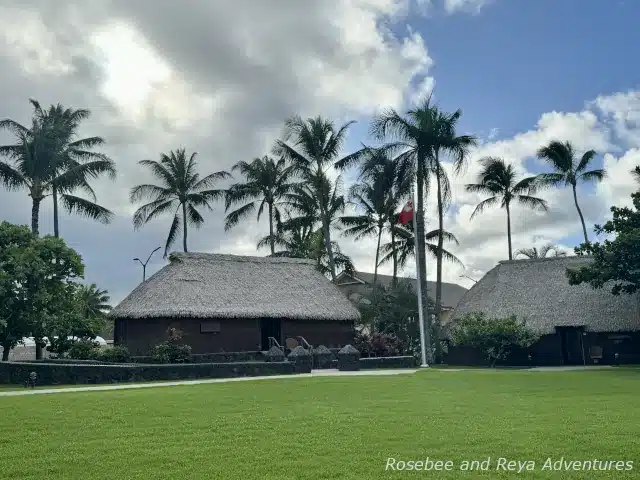
Visit the Iosepa Learning Center
At the Iosepa Learning Center, you will see a working replica of a traditional Hawaiian double-hulled voyaging canoe. There are exhibits that demonstrate the types of wood used to construct the canoe, the types of tools used by ancient Hawaiians, and the knots used to tie ropes used on the canoe. The canoe on display is very large and is actually sailed by BYU students. At the Iosepa Learning Center, you will also learn how to navigate using the stars.
The information learned at the Iosepa Learning Center is very interesting. It is worth stopping by to check out the exhibits.
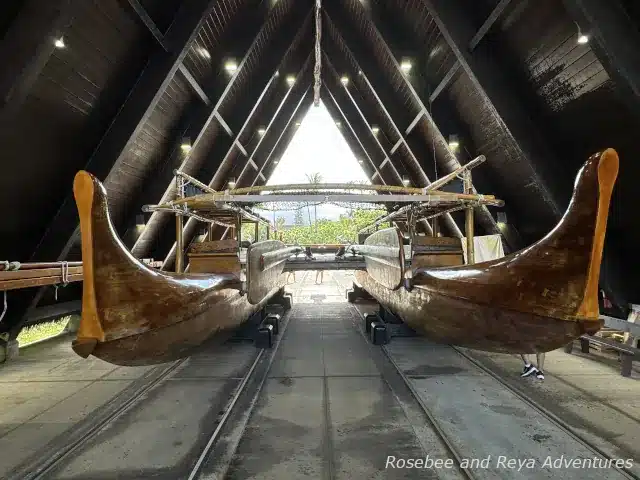
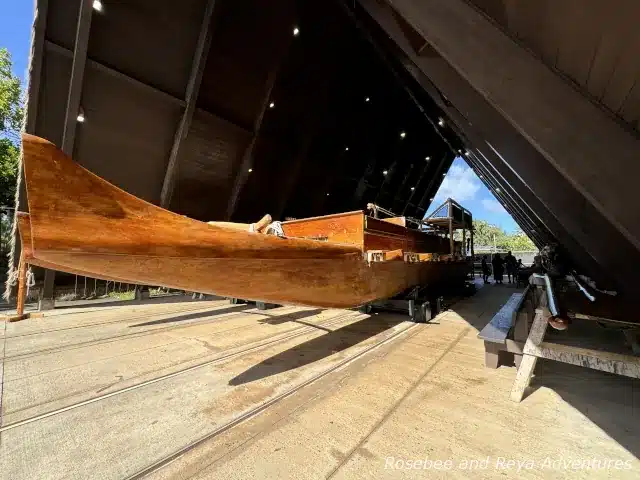
Visit the Rapa Nui Exhibit
Rapa Nui is the Polynesian name for Easter Island, a territory of Chile in Oceania. The Rapa Nui exhibit is in the middle of the lagoon. You can reach the exhibit by a bridge that crosses the lagoon. The exhibit has several Moai, which are stone monuments similar to ones found throughout Rapa Nui.
There is also an Ahu Tu’u Koihu, an altar and burial place for high-ranking chiefs. The Ahu Tu’u Koihu at the exhibit is a partial replica of Ahu Nau Nau, an altar and burial place found on Rapa Nui.
The Rapa Nui exhibits are pretty impressive and are worth seeing.
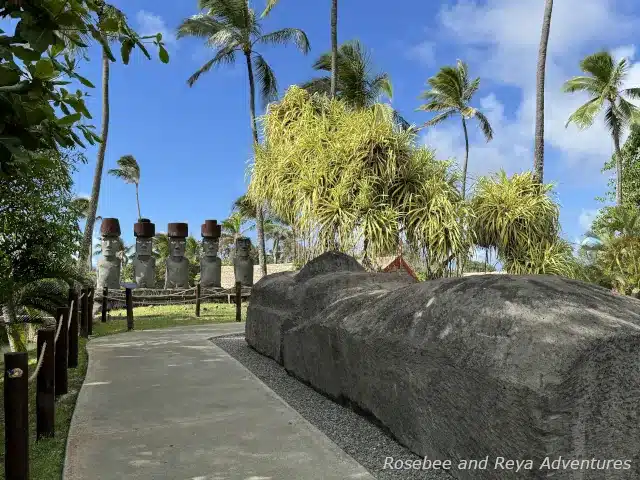
Take an Island Canoe Boat Tour on the River
You can enjoy a tranquil island canoe boat tour on the river. This tour is different from the hands-on canoe paddle offered at Tonga Village. This canoe is a large double-hulled canoe that holds around 20 persons. There are two locations where you can go on one of the canoe rides. The first location is near the entrance to the Hawaiian Journey Theatre. This is the South Canoe, which will take you along the river to the North Canoe entrance. The North Canoe entrance is located at the north end of the cultural center in between the Hawaii Village and the Tahiti Village.
You can take the Island Canoe Boat Tour from one end of the center to the other. The Polynesian Cultural Center is large. If you get tired from walking, taking a canoe ride is a great way to get across the center. Each trip is one-way until the last half hour when the south canoe is round trip.
The South Canoe south-to-north route operates from 1:10 pm to 5:00 pm. The North Canoe north-to-south route operates from 1:30 pm to 5:30 pm. The round-trip canoe departs from the south landing and operates from 5:00 pm to 5:30 pm.
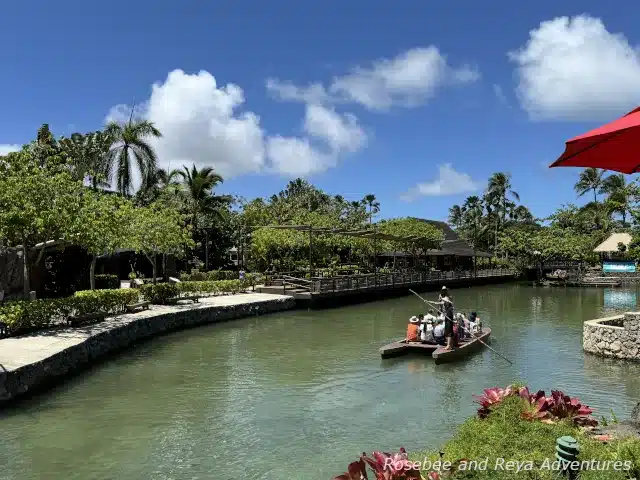
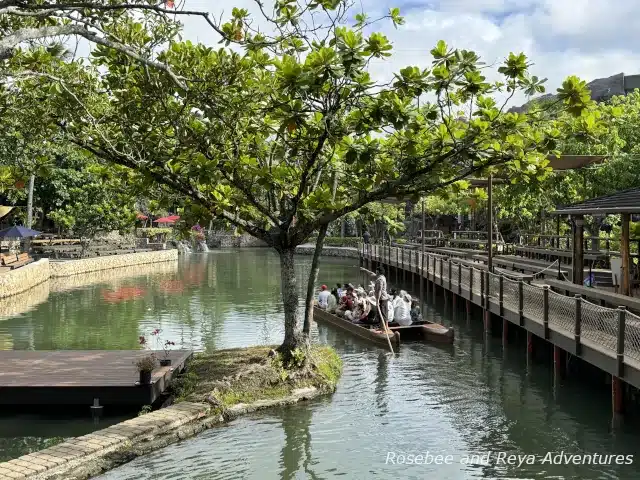
Dining at the Polynesian Cultural Center
There are several dining options at the Polynesian Cultural Center. Throughout the Villages, there are places where you can grab a bite to eat. The options include snack carts, small food vendors, and larger restaurant-type eateries. There is a variety of food offered, from island delicacies to shave ice and hamburgers and hot dogs.
Alii Luau
The Alii Luau is offered as part of the entrance package. The Luau includes a presentation of the traditional imu and many authentic Hawaiian dishes. In addition to dinner, there is music and entertainment.
The Gateway Buffet
The Gateway Buffet has always been our favorite dining choice at the Polynesian Cultural Center. The buffet has several stations with a wide variety of food choices, including salads, seafood, and many Asian and authentic island choices. There are a variety of desserts and non-alcoholic drinks. The food at the Gateway Buffet is absolutely delicious. There is also live music during dinner.
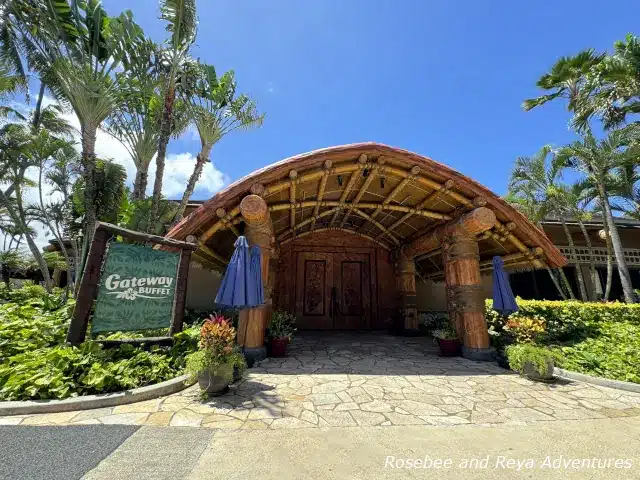
Food Trucks, Food Stands, and Pounders Restaurant at the Hukilau Marketplace
The Hukilau Marketplace has a variety of food choices as well. If you arrive early at the cultural center, you can have a nice lunch while you wait for the doors to open. Or you can choose to have your dinner at the Marketplace. The food choices include Korean, Mexican, Kiwi Style Fish and Chips, Hot Dogs, and more. You can also eat at Pounders Restaurant, which is a full-service restaurant in the Marketplace. If you are in the area and will drive past the Polynesian Cultural Center, you can also stop to grab a bite to eat. The marketplace is closed on Wednesday and Sunday.
The “Ha: Breath of Life” Evening Show at the Polynesian Cultural Center
The “Ha: Breath of Life” show is held in the evening and is a great way to end your evening at the Polynesian Cultural Center. The show tells an emotional story of life through dance, music, and fire performances. All the villages you visit throughout the day at the cultural center are represented at the “Ha: Breath of Life” show. Each village has a segment and performs traditional dances and songs. The show fills up, so purchasing an entrance package that includes this spectacular evening show is a good idea.
Visit The Hukilau Marketplace
The Hukilau Marketplace is outside the entrance of the Polynesian Cultural Center and has a wide variety of shops with local goods and souvenirs. It is a great place to stop and walk around if you are in the area. Besides the great shops at the Marketplace, there are a variety of places to eat, including Pounders restaurant and several food trucks and stands.
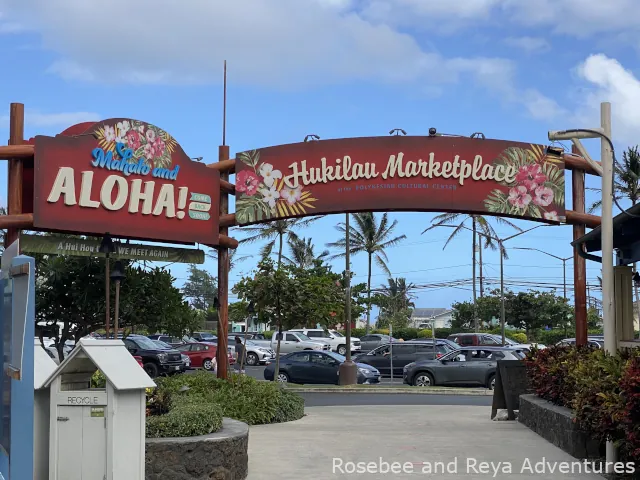
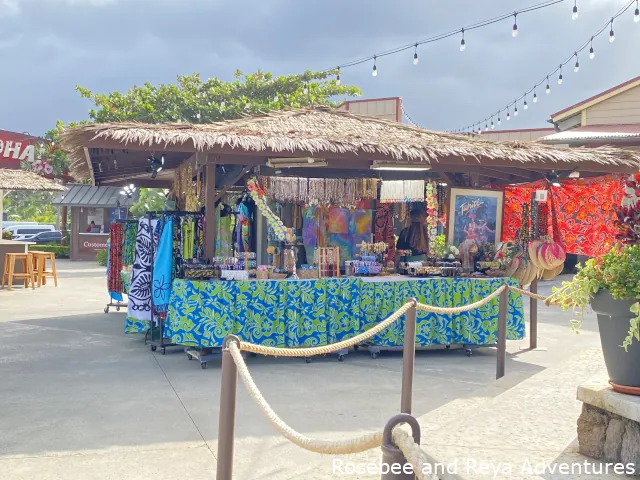
Download the Polynesian Cultural Center’s Mobile App
The Polynesian Cultural Center has a mobile app that you can use throughout the day. On the mobile app, you can view your tickets and see all activities, cultural points, and schedules for the day. There is also an interactive map with GPS. You will also use the mobile app to download your free picture. The mobile app is very handy to use throughout the day.
Frequently Asked Questions About the Polynesian Cultural Center
Here are answers to a few frequently asked questions to help you plan your visit to the Polynesian Cultural Center.
Yes, the Polynesian Cultural Center is a great place to take children. The Polynesian Cultural Center offers a variety of family-friendly activities that are great for children, including interactive village experiences and cultural crafts.
You should plan to spend at least a full day in order to fully experience all the villages, shows, and activities the Cultural Center offers.
No, you do not need to make reservations. You can purchase tickets on the day you would like to attend. However, I highly recommend that you purchase your tickets in advance as program options such as the Luau do sell out.
The best way to get to the Polynesian Cultural Center from Waikiki is by car. Getting to the Polynesian Cultural Center from Waikiki takes about an hour. You can add transportation services to your ticket if you do not have a car or decide not to drive.
Parking is free at the Polynesian Cultural Center. The parking lot is very large. If you visit the Hukilau Marketplace, you will not have any problems finding a parking spot during the week. Saturday could be busier. However, there is so much parking available that you should still find a spot.
Is Visiting the Polynesian Cultural Center Worth It?
Yes! Visiting the Polynesian Cultural Center is absolutely worth it. The center provides a unique cultural journey as you visit the different villages. You learn about the differences and similarities between different Polynesian countries. You interact with many different people from Polynesia, and it is just incredible. There is so much to learn and explore. The hands-on activities are fun to do. It is a wonderful day of trying new things. The food at the center is delicious, and the evening show is spectacular. It is totally worth spending a day at the Polynesian Cultural Center.
We’d love to hear from you! Have you visited the Polynesian Cultural Center, or are you planning to visit? Comment below and let us know!
Popular and Related Posts
- 75 Top Things to Do in Oahu – The Ultimate Guide for Your Oahu Vacation
- 24 Amazing Beaches on Oahu to Experience & Visit
- 24 Family Friendly Things to Do in Oahu with Kids
- Visiting the Byodo-In Temple in Oahu – A Complete Guide
- A Guide to Visiting the Dole Plantation on Oahu
- Kualoa Ranch – Hawaii’s Jurassic Park Adventure Tour
- 24 Amazing Things to Do on the Big Island of Hawaii
- 8 Best Things to Do at Volcanoes National Park
- 18 Amazing Beaches on the Big Island of Hawaii
- The 11 Best Things to Do in Hilo on the Big Island of Hawaii

